Below Graphics as 2013 Story Board Short (PPT): SHORT 1-8
INVITE Robert Steele to Speak & Nurture & Energize!
1957+ Story Board Long: Decision-Support — Analytic Sources, Models, Tools, & Tradecraft 1957-2013
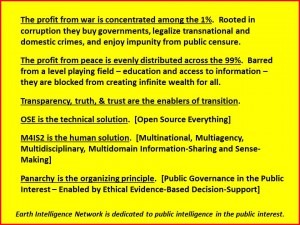
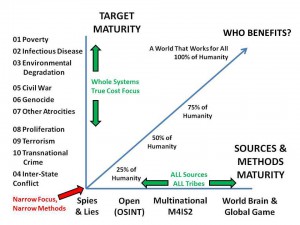
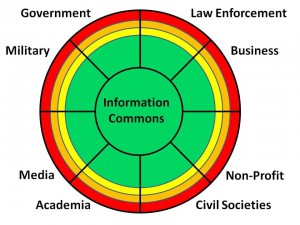
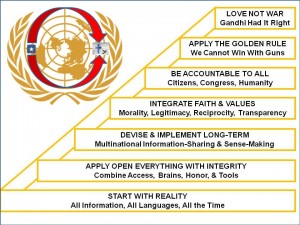
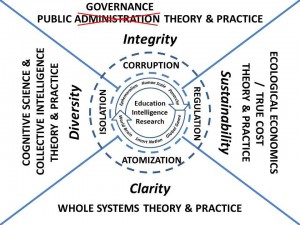
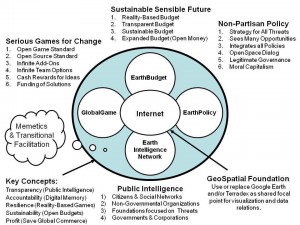
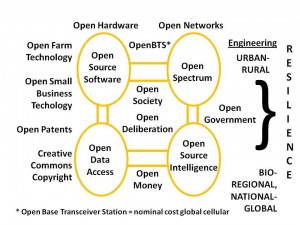
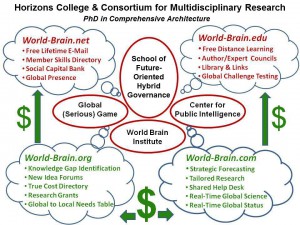
Below Graphics as 2013 Story Board Short (PPT): SHORT 1-8
INVITE Robert Steele to Speak & Nurture & Energize!
1957+ Story Board Long: Decision-Support — Analytic Sources, Models, Tools, & Tradecraft 1957-2013








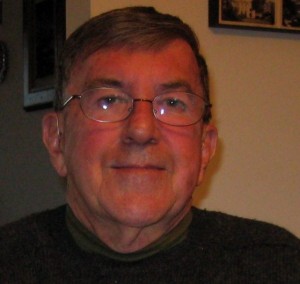
I think your thought piece on NATO is excellent, but somewhat incomplete. NATO is the diplomatic and administrative headquarters, but the Supreme Headquarters Allied Powers Europe (SHAPE) is the actual C2 for NATO military operations
In my opinion, the U.S. needs to back out of NATO and its operational counter part SHAPE and leave both to the EU (as you suggest). The U.S. could join Russia in an observer status at NATO, but would no longer be a voting member. Both NATO and SHAPE would be under the EU, but would include non-EU members (e.g. Turkey).
This would do two beneficial things: it would provide Europe with a dedicated all European military force; and it would facilitate the move towards greater integration of EU member countries.
The benefits to the U.S. would also be significant by forcing the U.S. to recognize that the Cold War is over and there is no longer any reason to have a major U.S. Military presence in Germany (Italy is another matter given its proximity to the still volatile Maghreb)
I think that your proposal for a dedicated EU-NATO Intelligence Organization is absolutely brilliant, but again I would add a second intelligence entity to SHAPE for support to military operations (SMO). Both of these organizations would be all European.
I too am a non-player in the power games inside the DC Beltway. If I had any influence you would not be unemployed. Frankly I believe that the executive and legislative branches of the U.S. Government have lost interest in governing this country and are just going through the motions. So expecting the U.S. to take the initiative with NATO is fruitless.
Susan Rice is a brilliant and effective woman who I suspect will be ignored by President Obama, just as he ignored the super competent General Jones (who I became acquainted with when he headed the U.S. DOD Delegation at NATO).
Keep fighting the good fight!
Richard (AKA Retired Reader)

If you are looking for your ideal content curation toolkit here is my new completely updated supermap, listing in over 30 categories all of the tools and services you may need to curate any content, from video to news. This new supermap includes all of the tools and services that were already listed on NewsMaster Toolkit, with the addition of 25 new tools and with a much better organization of categories and labels. My choice for organizing and recreating this supermap has now fallen on Pearltrees, the only content curation tool that can easily handle most of my key requirements for such a large collection of tools. Nonetheless there are over 400 tools listed in this supermap, Pearltrees makes it a breeze to navigate through them, and to add new ones to the relevant branches. The supermap is now being updated daily.
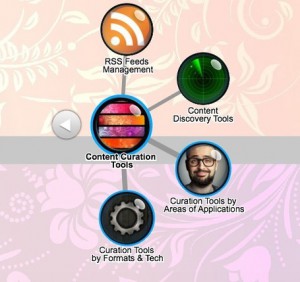
P.S.: I already feel the need for having a PRO account, which could allow me to further edit the pearls collected, to preserve original web pages saved, and to add images to pearls that weren't able to capture one from the web.
Enjoy the new supermap here: http://bit.ly/ContentCurationToolsSupermap. Try it out and let me know what you think. (*and if you think I am missing some tools or can improve with my taxonomy, feel free to send me in your suggestions!)

Boston Marathon Explosions: Analyzing First 1,000 Seconds on Twitter
My colleagues Rumi Chunara and John Brownstein recently published a short co-authored study entitled “Twitter as a Sentinel in Emergency Situations: Lessons from the Boston Marathon Explosions.” At 2.49pm EDT on April 15, two improvised bombs exploded near the finish line of the 117th Boston Marathon. Ambulances left the scene approximately 9 minutes later just as public health authorities alerted regional emergency departments of the incident.
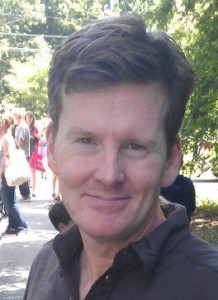
Protests Everywhere (here's why)
We're seeing protests everywhere. From Brazil to Turkey to Egypt.
What's going on? Here are some.
Once ignited, open source protest is hard to stamp out.
Open source protest is usually focused on a single overarching goal. In most recent cases, it's a call for a government that isn't corrupt.
“No corruption” is the type of goal everyone can get behind. To get a protest going, all there needs to be is a successful trigger event. Often, that an be as simple as a protest called by some group on Facebook that takes off virally.

Global Heat Map of Protests in 2013
My colleague Kalev Leetaru recently launched GDELT (Global Data on Events, Location and Tone), which includes over 250 million events ranging from riots and protests to diplomatic exchanges and peace appeals. The data is based on dozens of news sources such as AFP, AP, BBC, UPI, Washington Post, New York Times and all national & international news from Google News. Given the recent wave of protests in Cairo and Istanbul, a collaborator of Kalev’s, John Beieler, just produced this digital dynamic map of protests events thus far in 2013. John left out the US because “it was a shining beacon of protest activity that distracted from the other parts of the map.”
Read full article with multiple graphics.
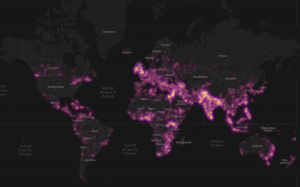
Continue reading “Patrick Meier: Global Heat Map of Protests in 2013”

Using Twitter to Map Blackouts During Hurricane Sandy
I recently caught up with Gilal Lotan during a hackathon in New York and was reminded of his good work during Sandy, the largest Atlantic hurricane on record. Amongst other analytics, Gilal created a dynamic map of tweets referring to power outages. “This begins on the evening October 28th as people mostly joke about the prospect of potentially losing power. As the storm evolves, the tone turns much more serious. The darker a region on the map, the more aggregate Tweets about power loss that were seen for that region.” The animated map is captured in the video below.
. . . . . .
In sum, creating live maps of geo-tagged tweets is only a first step. Base-maps should be rapidly developed and overlaid with other datasets such as population and income distribution. Of course, these datasets are not always available acessing historical Twitter data can also be a challenge. The latter explains why Big Data Philanthropy for Disaster Response is so key.
Continue reading “Patrick Meier: Using Twitter to Map Blackouts”